10 Small Flowers Used in Bouquets
Welcome to our floral journey through the world of small flowers for a bouquet! Bouquets are like nature's poetry, and the tiny blooms often weave the most delicate verses. In this article, we'll be your botanical tour guides. When it comes to crafting beautiful compositions, the magic often lies in the details. Little blooms sometimes may seem unassuming. However, they are the secret ingredients that infuse charm and grace into floral arrangements.
Here, we'll introduce you to 10 common small flowers that hold a special place in the hearts of florists and flower enthusiasts alike. So, whether you're a budding florist seeking inspiration or simply looking to appreciate the nuanced beauty of floral artistry, join us as we explore the delightful world of small flowers.
Delphinium

Delphinium, often called "larkspur," is a graceful and enchanting floret. It holds a special place in the hearts of flowery enthusiasts. These tall, stately blooms are famous for their striking, vertical growth and captivating array of colors. They range from deep blues and purples to soft pinks and whites. Delphinium may not be the first choice for small flowers for a bouquet. However, its height and charm can add a unique dimension to your floral setups.
One of the standout features of Delphinium is its intricate, densely packed florets that cluster along a tall stem. These delicate blossoms are reminiscent of a medieval knight's helmet. Delphiniums are often used to create dramatic, vertical accents in floral designs.
Apart from their aesthetic appeal, they also carry symbolic meanings. They are associated with qualities such as openness to new experiences and a sense of lightness.

Dianthus
Dianthus, often referred to as "pinks" or "carnations," is a beloved bud that graces gardens and bouquets with its timeless beauty. This charming bloom derives its name from two Greek words: "dios," meaning divine, and "anthos," meaning flower. It lives up to its name with its delightful fragrance and vibrant hues.
One of the most notable features of Dianthus is its delicate, fringed petals. They give it a unique and intricate appearance. These petals come in a variety of colors, including shades of pink, red, white, and even lavender.
People love Dianthus not only for its visual appeal but also for its sweet, spicy scent. The fragrance is often described as a blend of cloves and cinnamon. When it comes to bouquets, Dianthus is a versatile and readily available choice. Its long-lasting blooms and appealing aroma make it a popular selection.
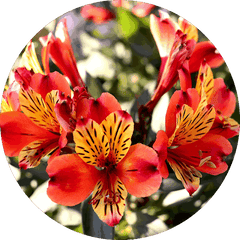
Alstroemeria
Alstroemeria, commonly known as the Peruvian Lily or Lily of the Incas, is a dainty yet dazzling bud. These small flowers are often the unsung heroes used in bouquets, adding a touch of elegance and sophistication.
One of the standout features of Alstroemeria is its longevity. These little florets have a remarkable vase life. You can be confident that your compositions stay fresh and beautiful for an extended period. This quality makes them a reliable choice for memorable occurrences. They symbolize friendship, mutual support, and lasting bonds.

Baby’s Breath (Gypsophila)
Baby’s Breath, scientifically known as Gypsophila, is like the gentle whisper of a garden. Its delicate appearance and airy clusters of tiny white or pink blossoms make it quite popular. Often referred to as "filler flowers," Baby’s Breath plays a vital role in enhancing the beauty of any bouquet.
One of the remarkable qualities of Baby’s Breath is its ability to create a sense of lightness and romance in designs. The delicate clusters and slender stems create a dreamy and ethereal effect. They pair beautifully with roses, lilies, or any other main focal florets. It allows the overall arrangement to come alive with a sense of balance and harmony.
Moreover, this kind is renowned for its longevity. These hardy little buds can withstand various conditions.
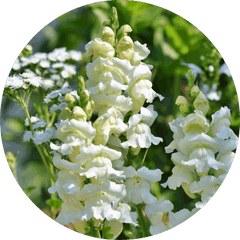
Snapdragon
These pretty florets are popular because they look unique and come in many hues. They bring a playful and colorful touch to gardens and bouquets alike.
What sets Snapdragons apart is their distinctive, tubular shape. It has two "lips" that can be gently squeezed to make the flower "snap" open and close, just like a dragon's mouth. This interactive feature makes them a favorite among children and adults alike, adding an element of fun.
Snapdragons come in various sizes, from petite dwarfs to tall giants. It makes them versatile for different needs. They bloom in a spectrum of colorings, including vibrant pinks, purples, reds, yellows, and soft pastels.

Hydrangea
Hydrangeas are like nature's own artistry. They showcase their stunning beauty through lush clusters of delicate blossoms. One of the standout features of hydrangeas is their versatility. These hardy plants thrive in a variety of climates and soil types. In floral setups, hydrangeas are a game-changer. They serve as a beautiful focal point due to their voluminous clusters. They can easily fill out bouquets, adding both substance and texture. Hydrangeas themselves are small filler flowers. Yet, they have the ability to make any arrangement appear fuller and more luxurious.
Hydrangeas are also known for their fascinating ability to change color based on the soil's pH levels. This color-changing quality adds an element of surprise and intrigue to your garden. They also symbolize heartfelt emotions, including gratitude and understanding.

Eucalyptus
Eucalyptus, with its refreshing scent and striking leaves, is a botanical treasure. These aromatic wonders, native to Australia, are more than just beautiful foliage. They offer a range of benefits and uses that make them a popular choice for both gardeners and florists.
One of the defining characteristics of Eucalyptus is its aromatic fragrance. The leaves emit a pleasant, invigorating scent that can instantly uplift your spirits. Many people use Eucalyptus sprigs in floral compositions or dried arrangements. They can infuse a room with its natural perfume.
Eucalyptus leaves have a distinctive shape and silvery-green hue. They add a touch of elegance and texture to floral creations.
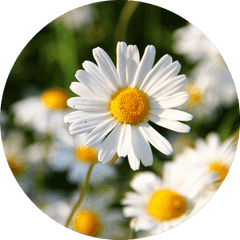
Daisy
Daisies, with their timeless charm and simplicity, are like rays of sunshine. Many adore these delightful blooms for their bright white petals and sunny yellow centers.
Daisies are classic small flowers for a bouquet. Their popularity endures through generations. They add a touch of cheerfulness and freshness to any floral setup.
One of the standout features of daisies is their iconic flower structure. The central disc, or "eye," is surrounded by delicate, petal-like rays. It gives them a friendly and approachable appearance. This unique shape makes them ideal for creating visually pleasing bouquets.
These cheerful buds signify purity, simplicity, and new beginnings. Daisies also hold a place in folklore, where they represent with adoration and positivity.
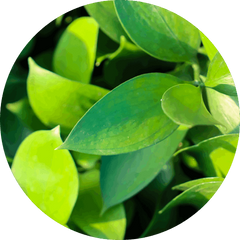
Ruscus
One of the defining features of Ruscus is its unique leaves. These glossy, lance-shaped leaves are dark green and have a leathery texture. It gives them a distinctive and appealing appearance. Ruscus leaves often serve as excellent fillers. They add depth, contrast, and a touch of sophistication.
In design, Ruscus plays a vital role as greenery. It provides a backdrop for vibrant blooms, enhancing their beauty and creating a harmonious balance in bouquets. They last a long time, so your compositions stay fresh and look good for a long while.
While Ruscus may not be as showy as some flowering plants, its role in the world of floristry cannot be understated. Its elegant foliage complements a wide range of flowers. You can combine it with roses, lilies, daisies, and tulips.
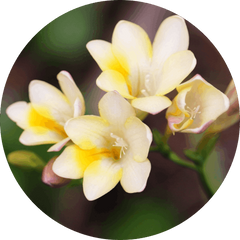
Freesia
These small flowers, often used in bouquets, bring not only a pop of color but also a sweet scent.
One of the standout features of freesia is its captivating fragrance. The sweet and citrusy aroma is delightful. It became a sought-after choice for compositions.
Freesia blooms are tiny but striking. They have a shape of funnel-like tubes with six petal segments. They come in different hues, including white, yellow, pink, red, and purple. The petite size makes them perfect for adding a touch of elegance and intricacy. These blooms can be the main attraction or serve as complementary elements.
These adaptable buds are also known for their long vase life. Their resilience and longevity make them a reliable choice for celebrations and events. Freesias are often used to convey sentiments of trust and innocence.
How to Choose the Right Filler Flowers for a Bouquet?
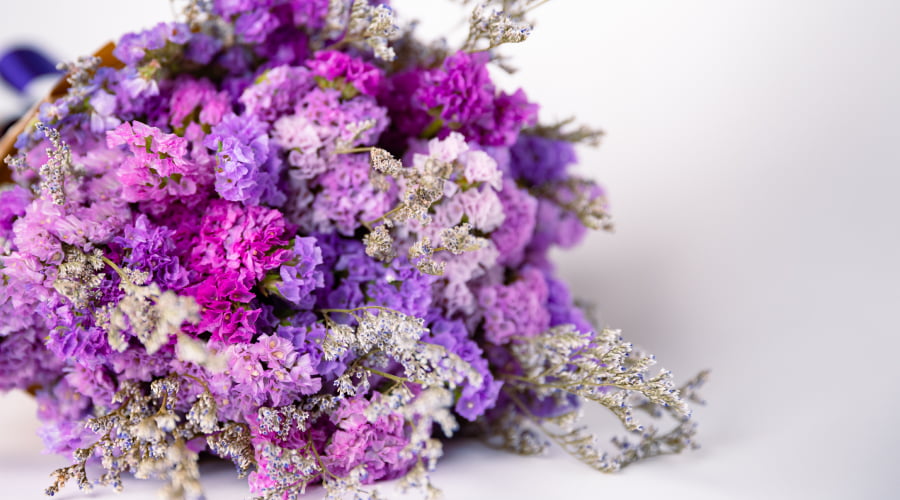
Creating a stunning bouquet is an art. One of the key elements that can elevate your design is the choice of filler flowers. These complementary blooms play a crucial role in enhancing the overall beauty and balance. Here are some tips on how to choose them properly.
- Think about the primary colors of your bouquet. Filler flowers should complement and enhance the main blooms. Choose ones that either harmonize with the dominant shades or provide a striking contrast.
- These buds come in various shapes and textures. Some have delicate, airy blossoms, while others are more robust and textured. Consider the overall look you want to achieve and select alternatives that contribute to that aesthetic.
- Be mindful of the season in which you're creating your bouquet. Opt for options that are in season to ensure freshness and cost-effectiveness.
- Some buds, like lavender or sweet alyssum, add a delightful fragrance. If scent is important to you, choose contents that contribute to the aroma.
- Pay attention to the length of the filler flower stems. They should be proportionate to the main florets.
- Consider your personal style and the occasion for which you're creating the bouquet. For a rustic look, wildflowers or greenery like eucalyptus can be great choices. If you prefer a more formal one, delicate fillers like Baby's Breath or Waxflower can be ideal.
carrusel_1
5 Gorgeous Bouquets with Filler Flowers by Rosagolics
At Rosagolics, we understand that the beauty of a bouquet lies in the details. Our exquisite compositions are meticulously crafted with the finest flowers, including a carefully chosen selection of filler flowers. Here are five of our stunning bouquets featuring different small filler flowers.
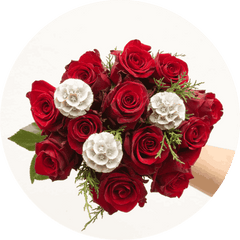 Romantic Star Rose Bouquet (Stellata)
Romantic Star Rose Bouquet (Stellata)

Graceful and regal, the Romantic Star Rose Bouquet is a true masterpiece. With velvety red roses as the focal point, the addition of white Stellata adds a touch of sophistication and texture. These green Cypress create a perfect backdrop for vibrant roses.

Tulum Fresh (Delphinium)
The Tulum Fresh is a celebration of nature's vivid colors. With their tall spikes of small, vibrant blooms, Delphiniums steal the show here. Lush greenery complements their intense blues and purples.
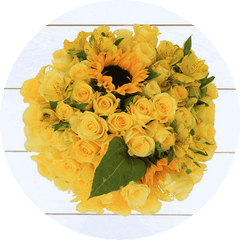 Golden Sun (Alstroemeria)
Golden Sun (Alstroemeria)

Love knows no bounds, and neither does the Golden Sun setup. Alstroemeria, with its delicate, lily-like petals and unique markings, represents lasting love and friendship. It is beautifully paired with vibrant roses and lush greenery.
Conclusion
In the world of flowers, the tiniest petals often weave the most delicate verses. We hope this journey through small flowers for bouquets has inspired you to appreciate the nuanced beauty of floral artistry. These little buds are a reminder that beauty can be found in even the most delicate details of life.
Choosing the right filler flowers requires thoughtful consideration of color, texture, season, fragrance, and personal style. These tiny wonders contribute to the overall harmony and balance of your setup. If you need a gorgeous bouquet for any occasion, Rosaholics is more than happy to help you!
FAQ
The name of a small bouquet of flowers is often referred to as a "posy" or a "nosegay."
To make a small bouquet of flowers, gather your chosen blooms, trim the stems at an angle, arrange them in your hand, add filler flowers and greenery for balance, secure the bouquet with floral tape or twine, and trim the stems to your desired length.
A filler flower is a small, often delicate bloom that is used to complement and enhance the appearance of a bouquet. These flowers fill in the spaces between the main blooms and add texture, volume, and a sense of balance to the arrangement.
We use filler flowers in bouquets to achieve several purposes: to add depth, texture, and volume; to create a harmonious balance between the main flowers; to enhance the overall beauty and visual appeal of the bouquet; and to ensure that the arrangement looks full and well-proportioned.
Read also:
Types and Mystery Signs of Black Flowers
Delphinium Flower: Care and Types







